Study on Shock-Absorbing Effect of a Double-Story Isolation Structure Considering Soil–Structure Interaction
Abstract
:1. Introduction
2. Structural Model
2.1. Overview
2.2. Model Building
2.3. Seismic Wave Selection
3. Implementation of SSI
4. Response Study of the Double-Story Isolation System with SSI
4.1. Comparison of Structural Periods
4.2. Comparison of Base Shear
4.3. Comparison of Inter-Story Displacement
4.4. Comparison of Story Shear
4.5. Comparison of Maximum Acceleration of the Top Layer
4.6. Comparison of Overturning Moment
5. Analysis of the Isolation Layer of the Double-Story Isolation System with SSI
5.1. Comparison of Displacement of the Isolation Layer
5.2. Comparison of Tensile and Compressive Stresses of the Isolation Bearings
6. Structural Damage of the Double-Story Isolation System
6.1. Comparison of Structural Plastic Hinges
6.2. Comparison of Frame Stress Damage
7. Discussions
- The double-story isolation structure, when not accounting for the SSI effect, demonstrates the ability to extend structural periods, resulting in reduced base shear, inter-story displacement, and maximum acceleration of the top layer compared to a base isolation structure. These findings are consistent with the results obtained by other scholars [24,25].
- This paper focuses on the damping effectiveness of double-story isolation structures, considering the SSI effect. Double-story isolation structures demonstrate excellent damping effectiveness in hard soil conditions. However, in the case of soft soil, the damping capacity of the double-story isolation structure is poor. Additionally, when designing building projects in soft soil areas, it is essential to consider the potential drawbacks to the building structure, and accordingly, reinforce the construction of the structure.
- This study analyzes the impact of SSI on the three structures, but it remains somewhat insufficient. Deep learning, artificial neural networks, and artificial intelligence have demonstrated significant importance in solving practical engineering problems [29,30,31,32,33,34]. In our upcoming research, we will undertake a comprehensive investigation into the application of deep learning, artificial neural networks, and artificial intelligence in the field of civil engineering. Our goal is to provide valuable insights for the future development of high-performance building structures.
8. Conclusions
- The double-story isolation structure can prolong the structural period further than the base isolation structure, and the structural period increases as the soil softens and the structure becomes more flexible.
- When considering SSI on hard soil and when SSI is not considered, the double-story isolation structure exhibits smaller base shear, story force, inter-story displacement, maximum acceleration of the top floor, and displacement of the isolation layer compared to the mid-story isolation structure. Conversely, the base-fixed structure shows the largest values for base shear, story force, inter-story displacement, and maximum acceleration of the top layer, indicating the significant shock-absorbing effect of the double-story isolation structure. However, when considering SSI on soft soil, the shock-absorbing effect of the isolation structure is diminished, and the effectiveness of the double-story isolation structure may not necessarily surpass that of the mid-story isolation structure.
- In all three soil conditions, the compressive stresses generated in the isolation bearings of the upper layer of the double-story isolation structure are lower compared to those in the mid-story isolation structure, indicating better stability of the isolation bearings in the double-layer structure. However, the compressive stresses in the isolation bearings of the base isolation layer in the double-story isolation structure are higher than those in the upper isolation layer. Furthermore, the compressive stresses in the isolation bearings of the double-story isolation structure exhibit significant variations under different soil conditions, indicating the complex influence of soil on the structure.
- In all three soil conditions, the double-story isolation structure exhibits significantly lower overall overturning moments compared to the mid-story isolation structure, demonstrating its excellent overturning resistance and superior overall structural stability. It is worth noting that the highest overturning moment occurs when the foundation is composed of soft soil.
- In all three soil conditions, double-story isolation structures exhibit fewer plastic hinges and lower stress damage to the frame compared to mid-story isolation structures, effectively mitigating seismic effects. However, double-story isolation structures experience the highest number of plastic hinges and the most frame stress damage when constructed on soft ground. Soft soil has a more intricate impact on structures, making them more susceptible to resonance. This aspect should receive greater attention in the design process.
Author Contributions
Funding
Data Availability Statement
Conflicts of Interest
References
- Chai, W.C. Mega-Sub Control of High-Rise Building; University of California: Irvine, CA, USA, 1996. [Google Scholar]
- Ou, J.P.; Wu, P.S.; Guan, X.C. Seismic resilient base isolated structure equipped with super-large displacement friction pendulum bearing and isolated structure equipped with multi-super-large displacement friction pendulum bearing. J. Disaster Prev. Mitig. Eng. 2021, 41, 657–676. [Google Scholar]
- Loh, C.H.; Weng, J.H.; Chen, C.H.; Lu, K.C. System identification of mid-story isolation building using both ambient and earthquake response data. Struct. Control Health Monit. 2013, 20, 139–155. [Google Scholar] [CrossRef]
- Zhou, Q.; Singh, M.P.; Huang, X.Y. Model reduction and optimal parameters of mid-story isolation systems. Eng. Struct. 2016, 124, 36–48. [Google Scholar] [CrossRef]
- Takewaki, I.; Kanamori, M.; Yoshitomia, S.; Tsuji, M. New experimental system for base-isolated structures with various dampers and limit aspect ratio. Earthq. Struct. 2013, 5, 461–475. [Google Scholar] [CrossRef]
- Eem, S.H.; Jung, H.J. Seismic response distribution estimation for isolated structures using stochastic response database. Earthq. Struct. 2015, 9, 937. [Google Scholar] [CrossRef]
- Eem, S.H.; Jung, H.J. Seismic fragility assessment of isolated structures by using stochastic response database. Earthq. Struct. 2018, 14, 389–398. [Google Scholar]
- Fallahian, M.; Khoshnoudian, F.; Loghman, V. Torsionally seismic behavior of triple concave friction pendulum bearing. Adv. Struct. Eng. 2015, 18, 2151–2166. [Google Scholar] [CrossRef]
- Yang, W.; Bao, C.; Ma, X.; Zhang, S. Study on structural robustness of isolated structure based on seismic response. Appl. Sci. 2018, 8, 1686. [Google Scholar] [CrossRef]
- Zhu, Y.H.; Lu, X.L.; Shi, W.X.; Feng, D.M. Analysis of the Seismic Response of the Building Models with Lead Rubber Bearings for Vibration Isolation. J. Vib. Eng. 2003, 124–128. [Google Scholar] [CrossRef]
- Wu, X.X.; Li, H.N. Effect of Vertical Motion on Limit Ratio of Height to Width for Isolated Structure. J. Tongji Univ. (Nat. Sci.) 2004, 32, 10–14. [Google Scholar]
- Pan, Y.; Bao, Y.L.; Liu, Y.X.; Hu, S.Y. Seismic fragility analysis of base-isolation structure connected with large span special-shaped steel corridor. China Civ. Eng. J. 2021, 54, 20–29. [Google Scholar]
- Zhang, Y.; Tan, P.; Zhou, F.L. Seismic response prediction for a story-isolation structure based on energy balance method. J. Vib. Shock. 2009, 28, 137–141+209. [Google Scholar]
- Shi, C.; Du, Y. Evaluation of the collapse mode of isolated structures subjected to multi-directional dynamic coupling excitation based on reliability theory. Structures 2021, 34, 1261–1275. [Google Scholar] [CrossRef]
- Wang, N.; Huang, X. Global damage model for the seismic reliability analysis of a base-isolated structure. Structures 2021, 34, 4892–4907. [Google Scholar] [CrossRef]
- Karabork, T.; Deneme, I.O.; Bilgehan, R.P. A comparison of the effect of SSI on base isolation systems and fixed-base structures for soft soil. Geomech. Eng. 2014, 7, 87–103. [Google Scholar] [CrossRef]
- Ashiquzzaman, M.; Hong, K.J. Simplified Model of Soil-Structure Interaction for Seismically Isolated Containment Buildings in Nuclear Power Plant. Structures 2017, 10, 209–218. [Google Scholar] [CrossRef]
- Shourestani, S.; Soltani, F.; Ghasemi, M.; Etedali, S. SSI effects on seismic behavior of smart base-isolated structures. Geomech. Eng. 2018, 14, 161–174. [Google Scholar]
- Krishnamoorthy, A. Effect of soil-structure interaction for a building isolated with FPS. Earthq. Struct. 2013, 4, 285–297. [Google Scholar] [CrossRef]
- Zhang, Z.; Wei, H.; Qin, X. Experimental study on damping characteristics of soil-structure interaction system based on shaking table test. Soil Dyn. Earthq. Eng. 2017, 98, 183–190. [Google Scholar] [CrossRef]
- Liu, S.; Lu, Z.; Li, P.; Ding, S.; Wan, F. Shaking table test and numerical simulation of eddy-current tuned mass damper for structural seismic control considering soil-structure interaction. Eng. Struct. 2020, 212, 110531. [Google Scholar] [CrossRef]
- Dong, H.; Li, C.; Wen, J.; Han, Q.; Du, X. Seismic performance of self-centering rocking bents considering soil-structure interaction. Soil Dyn. Earthq. Eng. 2023, 168, 107845. [Google Scholar] [CrossRef]
- Zhang, Y.; Tan, P.; Zhou, F.L. Study on seismic reduction performance and parameter design of newly segmented isolation system. China Civ. Eng. J. 2010, 43 (Suppl. S1), 270–275. [Google Scholar]
- Rong, Q.; Lu, N.; Zhang, X.; Wang, G.K. Seismic response analysis of double isolation system in high-rise building. Earthq. Resist. Eng. Retrofit. 2018, 40, 87–92. [Google Scholar]
- Rong, Q.; Wu, D.; Sheng, Y. Seismic response analysis of double isolation system subjected to near-fault ground motions. Earthq. Resist. Eng. Retrofit. 2021, 43, 54–61. [Google Scholar]
- GB 50011-2010 (2016); Code for Seismic Design of Buildings. China Architecture & Building Press: Beijing, China, 2016.
- ATC. The Seismic Evaluation and Retrofit of Concrete Buildings. Volume 1 and 2; ATC-40 Report; Applied Technology Council: Redwood City, CA, USA, 1996. [Google Scholar]
- Fema A 440. Improvement of Nonlinear Static Seismic Analysis Procedures; FEMA-440: Redwood City, CA, USA, 2005; Volume 7, p. 11. [Google Scholar]
- Hu, X.; Kuang, Q.; Cai, Q.; Xue, Y.; Zhou, W.; Li, Y.A. Coherent Pattern Mining Algorithm Based on All Contiguous Column Bicluster. J. Artif. Intell. Technol. 2022, 2, 80–92. [Google Scholar] [CrossRef]
- Du, H.; Du, S.; Li, W. Probabilistic time series forecasting with deep non-linear state space models. CAAI Trans. Intell. Technol. 2023, 8, 3–13. [Google Scholar] [CrossRef]
- Zhang, Z.; De Luca, G.; Archambault, B.; Chavez, J.; Rice, B. Traffic Dataset and Dynamic Routing Algorithm in Traffic Simulation. J. Artif. Intell. Technol. 2022, 2, 111–122. [Google Scholar] [CrossRef]
- Zhao, H.; Ma, L. Several rough set models in quotient space. CAAI Trans. Intell. Technol. 2022, 7, 69–80. [Google Scholar] [CrossRef]
- Hsiao, I.H.; Chung, C.Y. AI-infused semantic model to enrich and expand programming question generation. J. Artif. Intell. Technol. 2022, 2, 47–54. [Google Scholar] [CrossRef]
- Chen, J.; Yu, S.; Wei, W.; Ma, Y. Matrix-based method for solving decision domains of neighbourhood multigranulation decision-theoretic rough sets. CAAI Trans. Intell. Technol. 2022, 7, 313–327. [Google Scholar] [CrossRef]
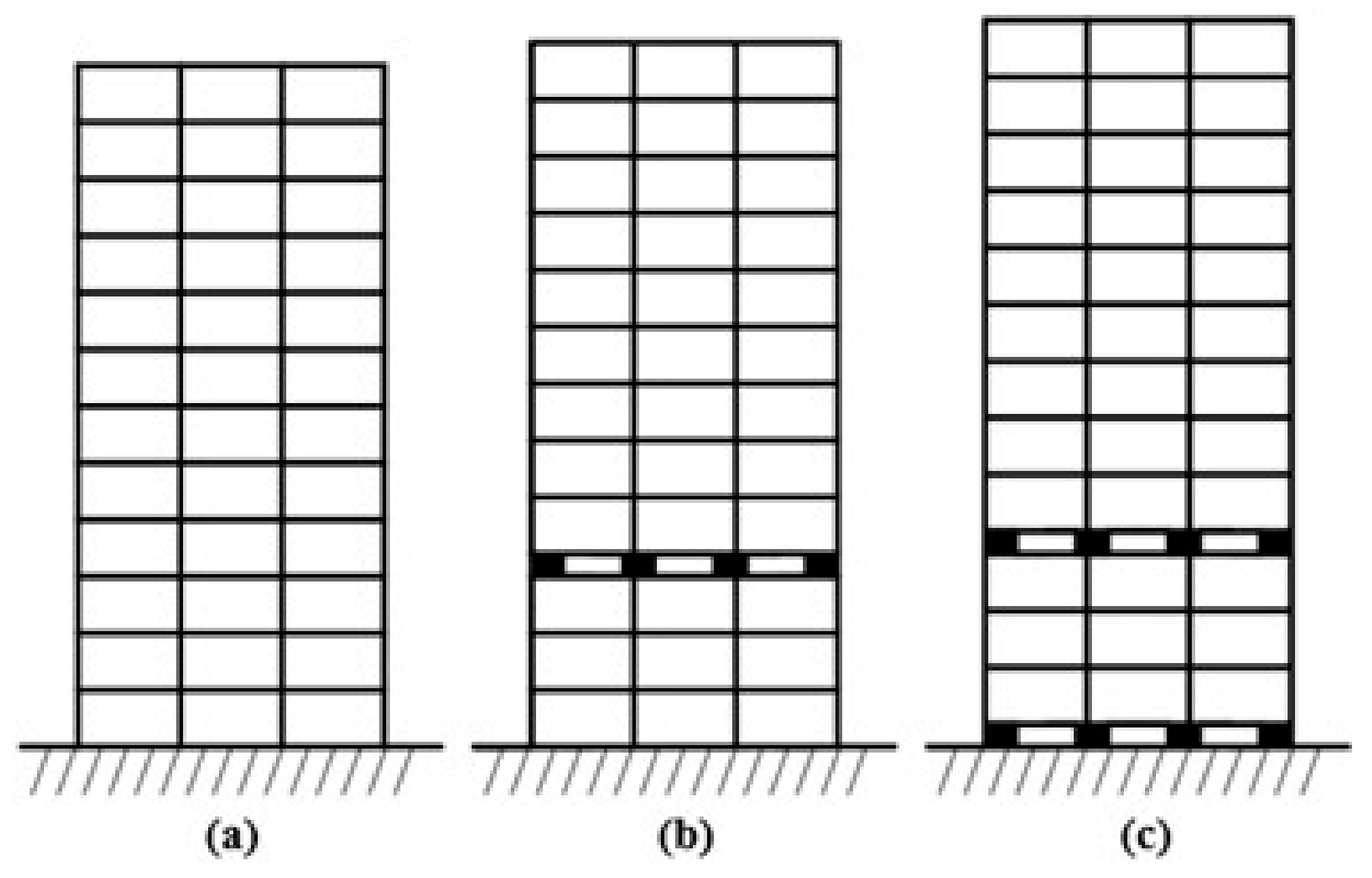
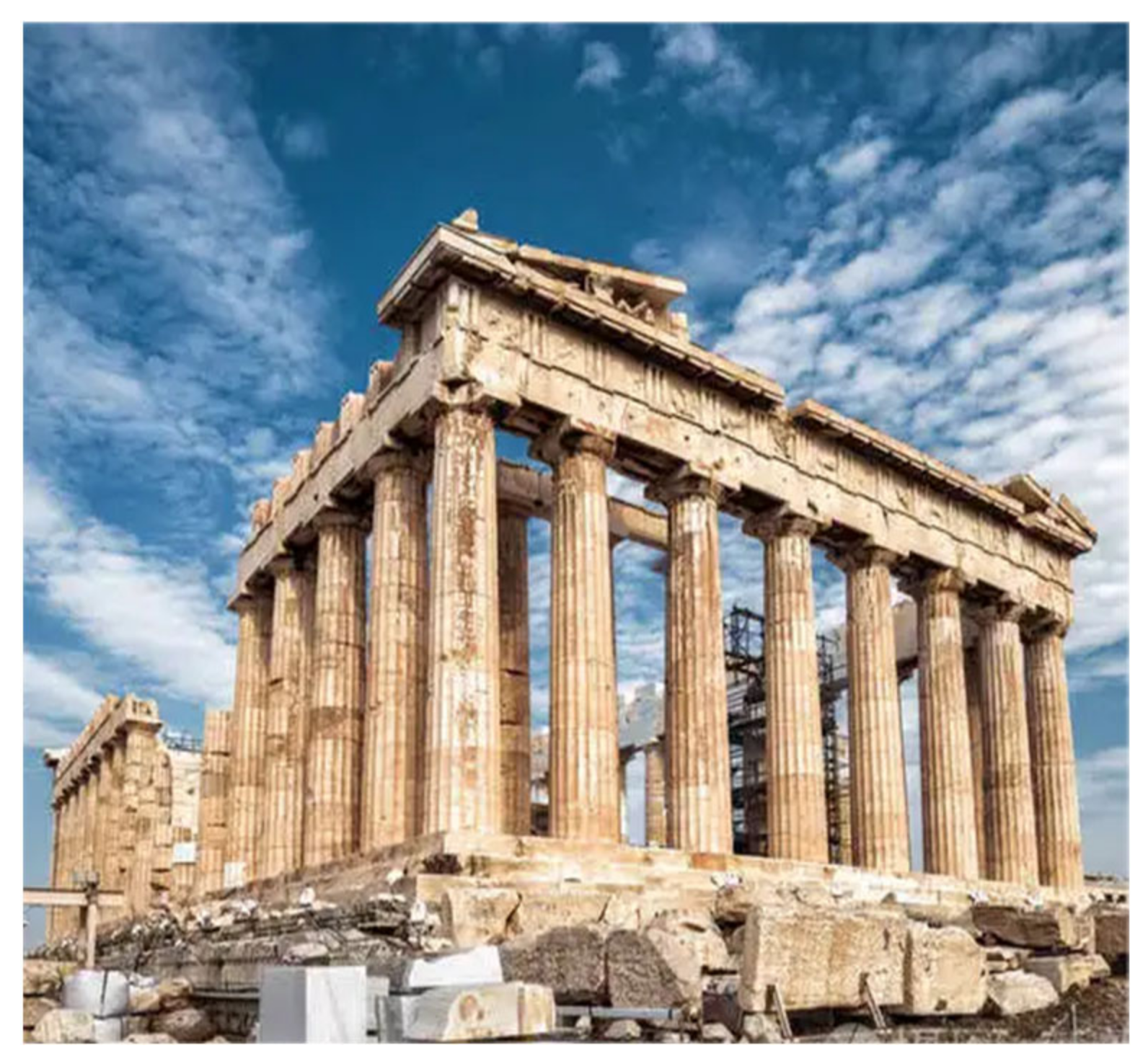
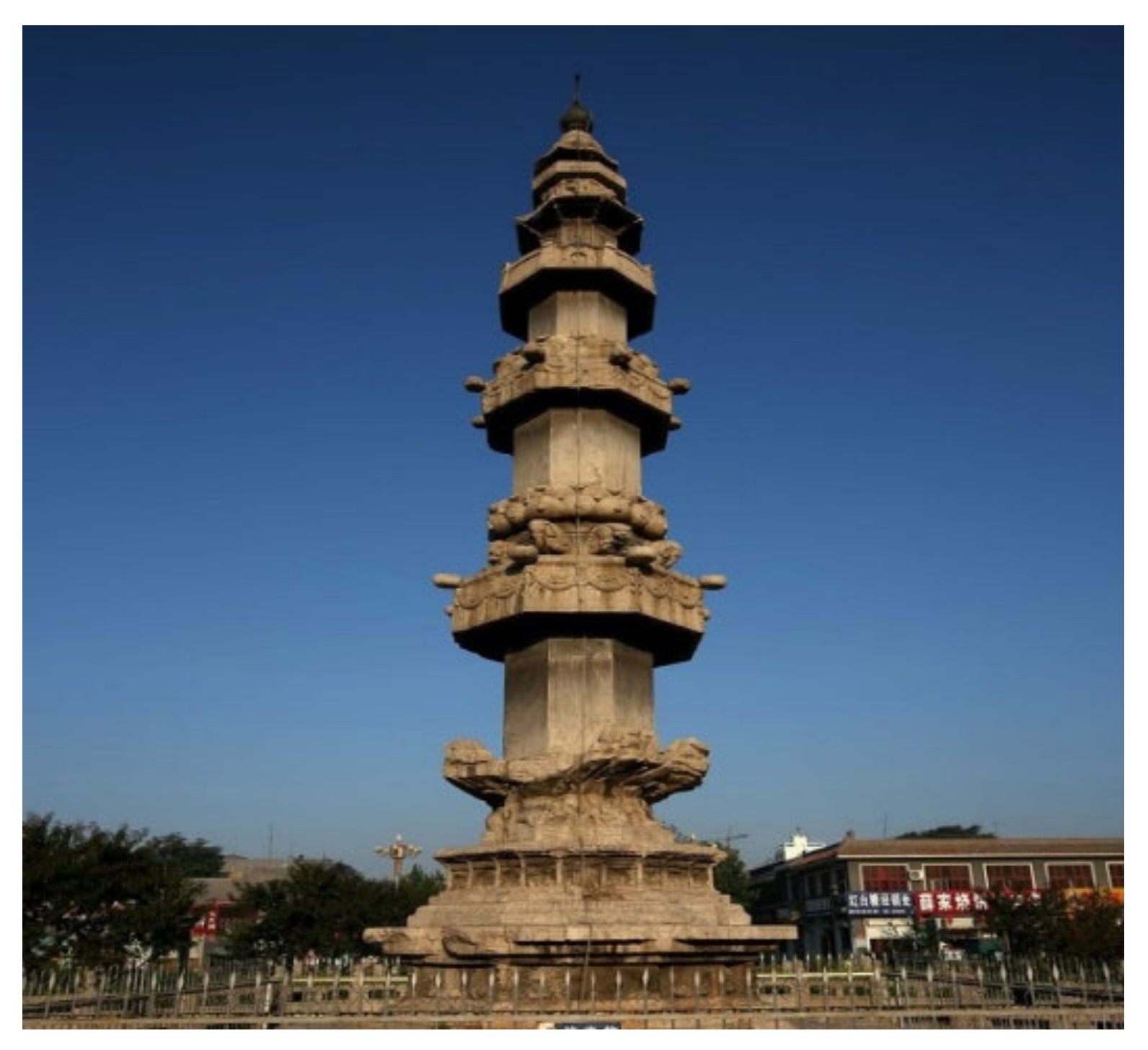

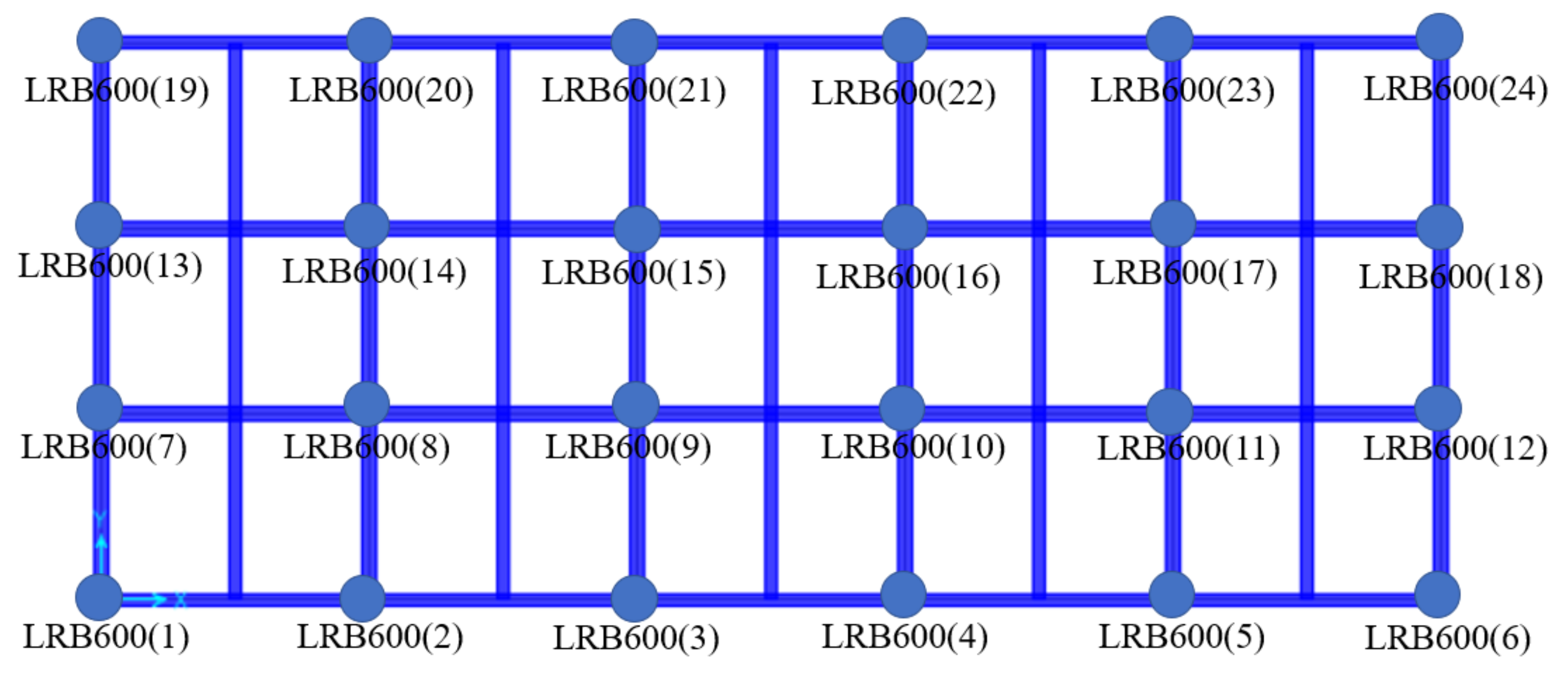
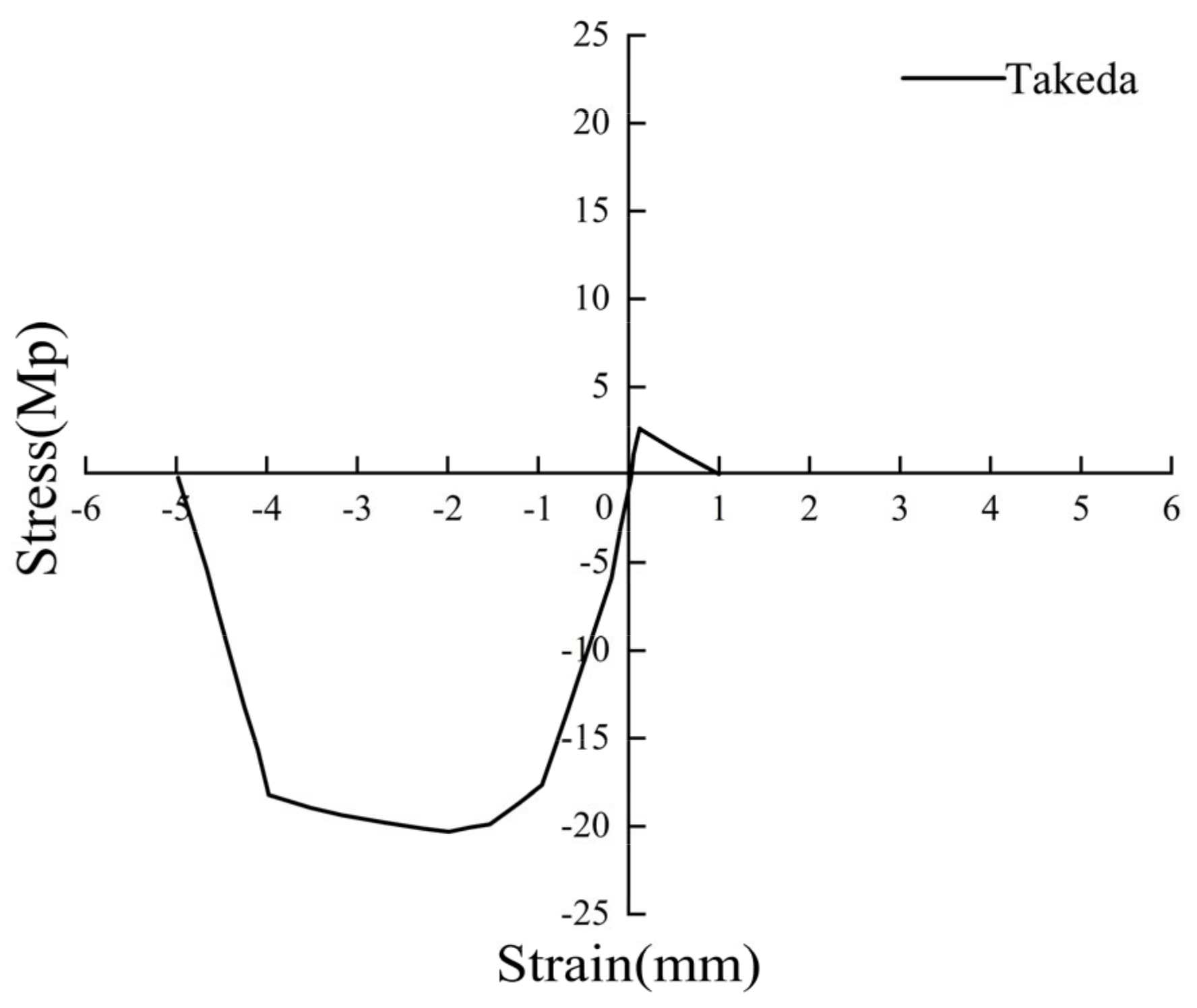
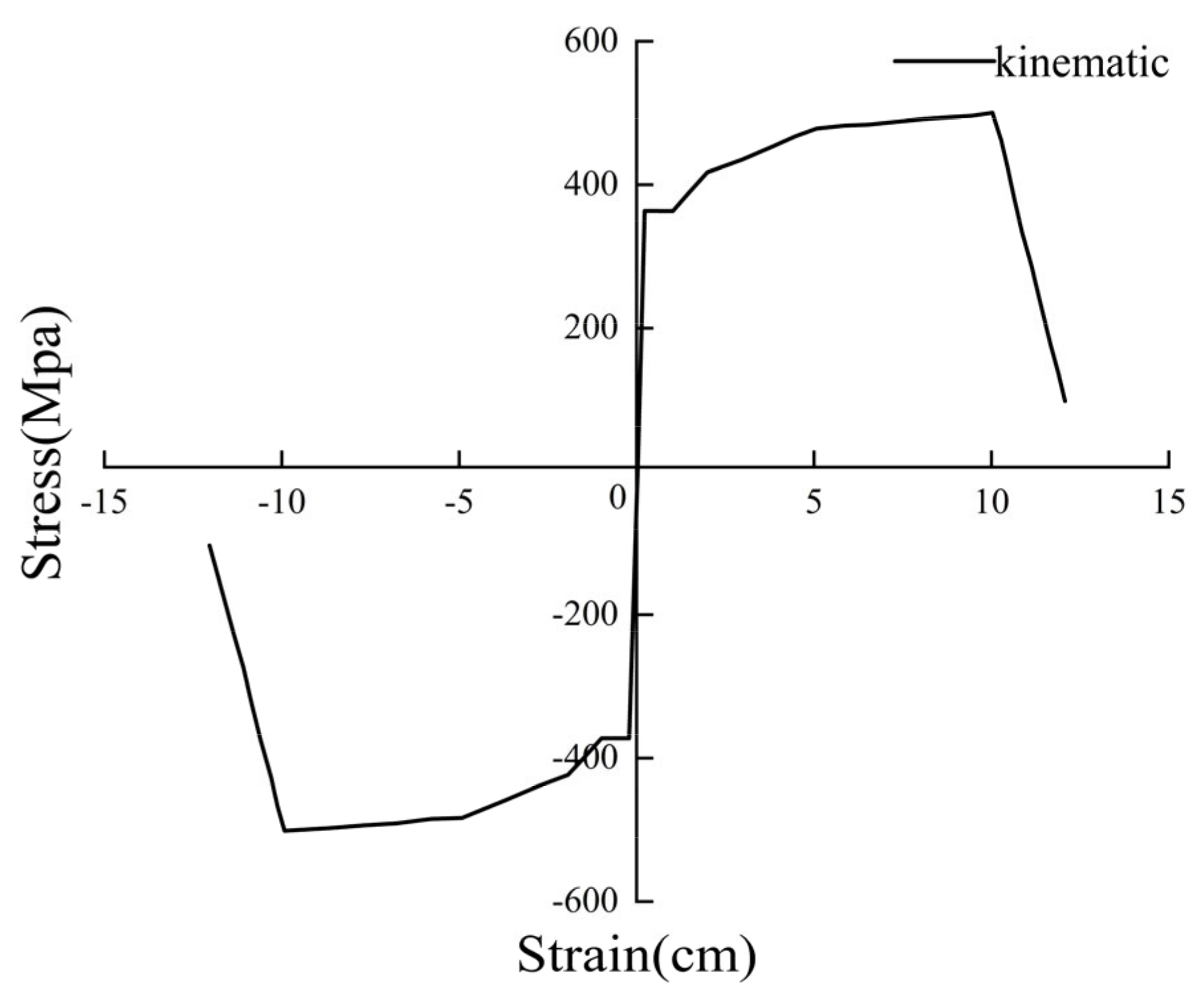
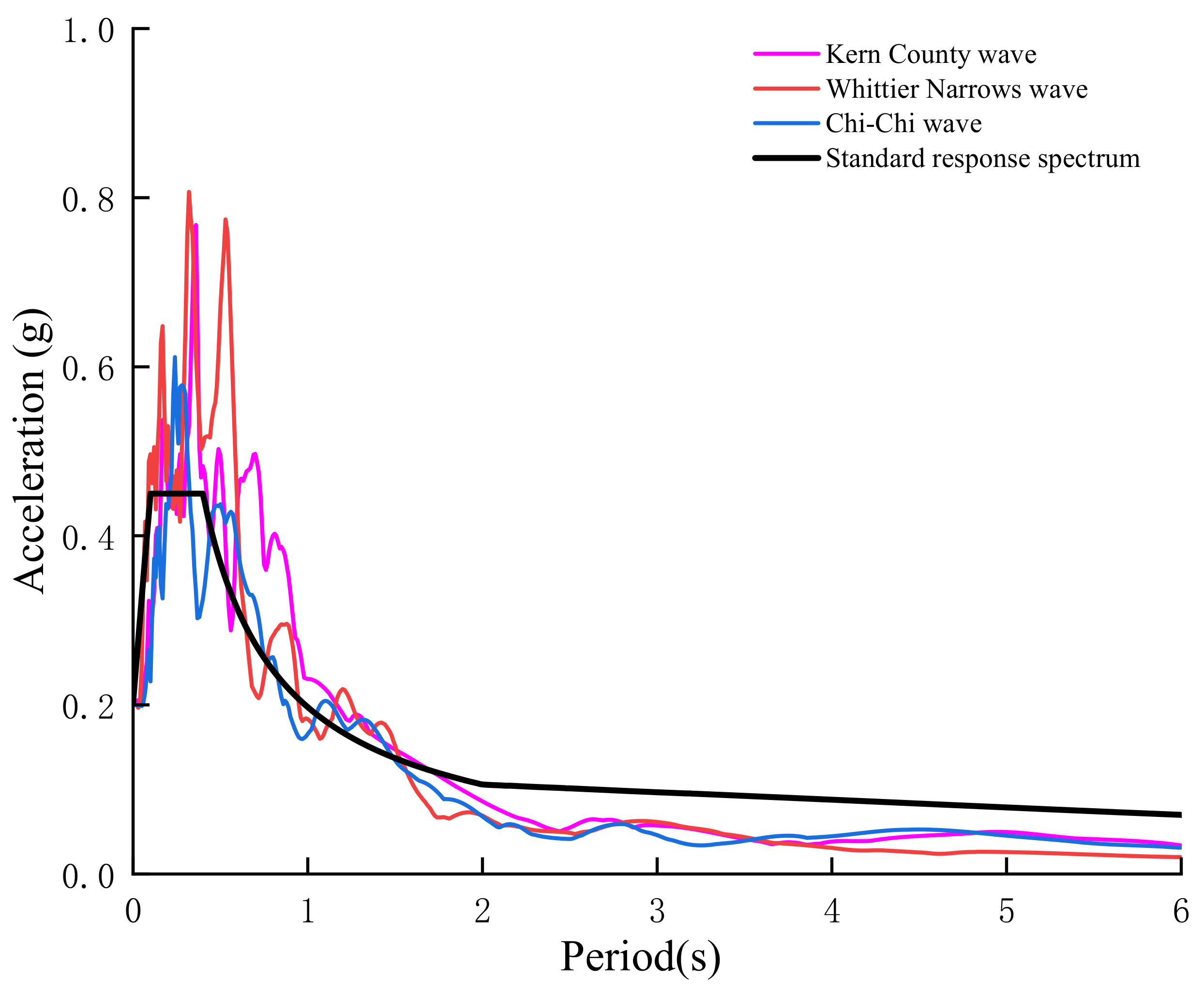
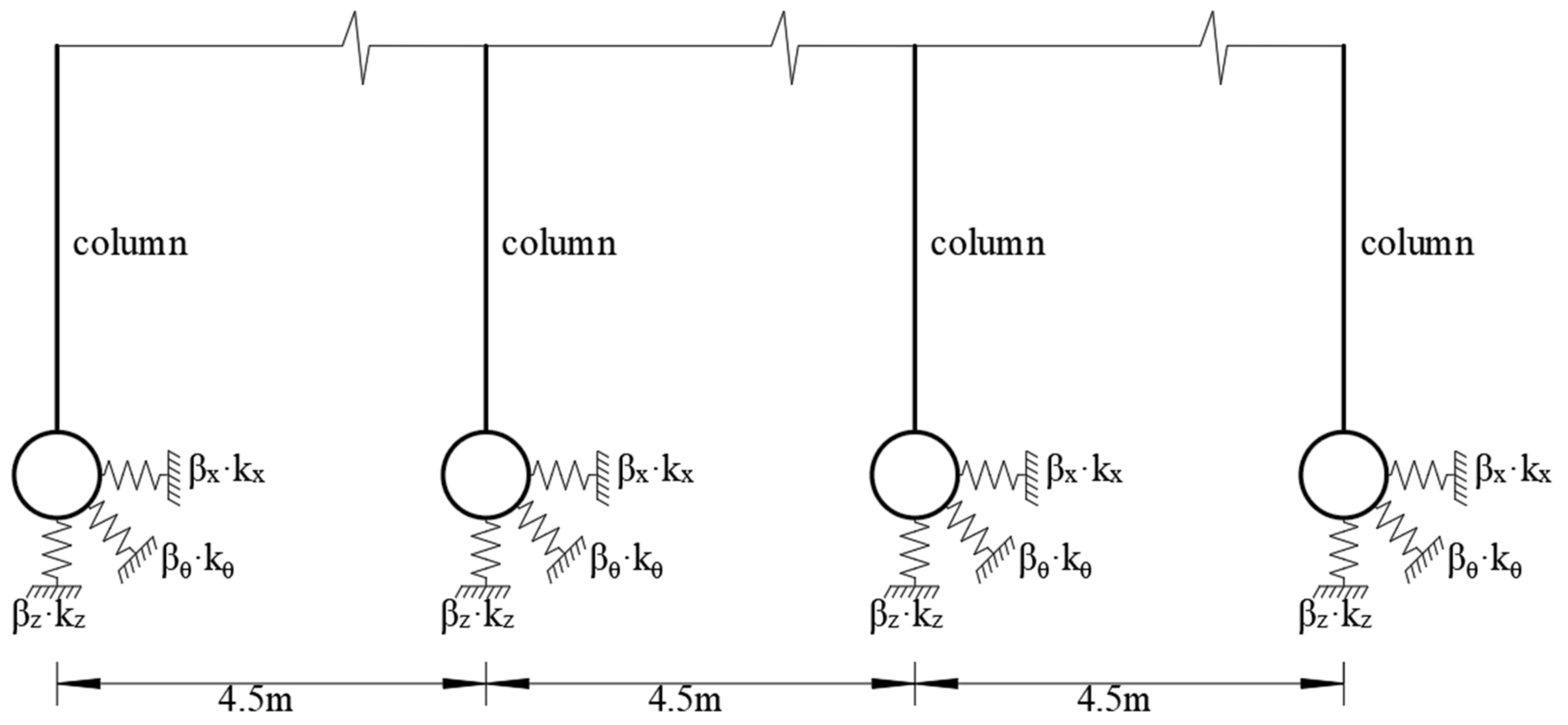



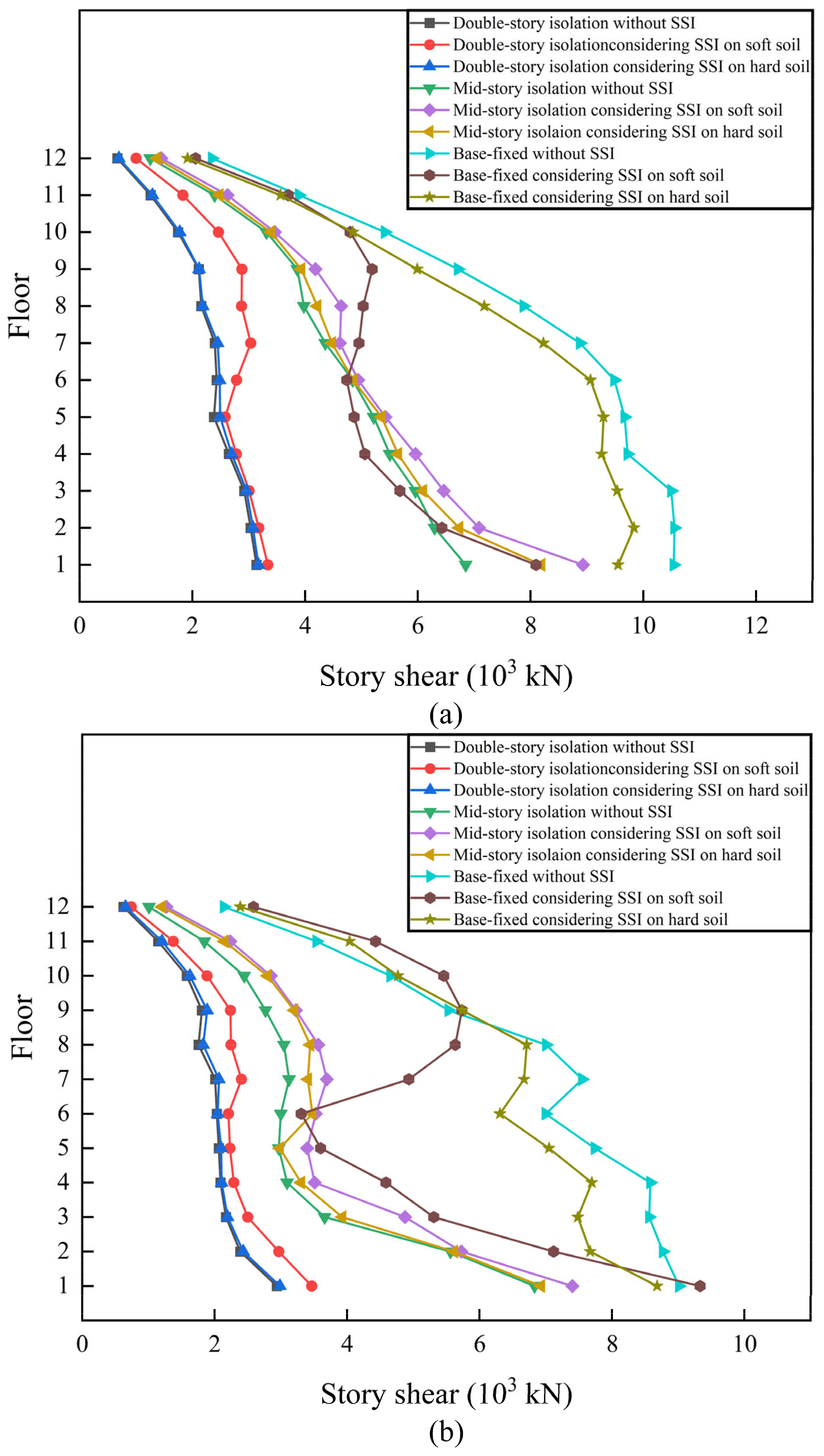

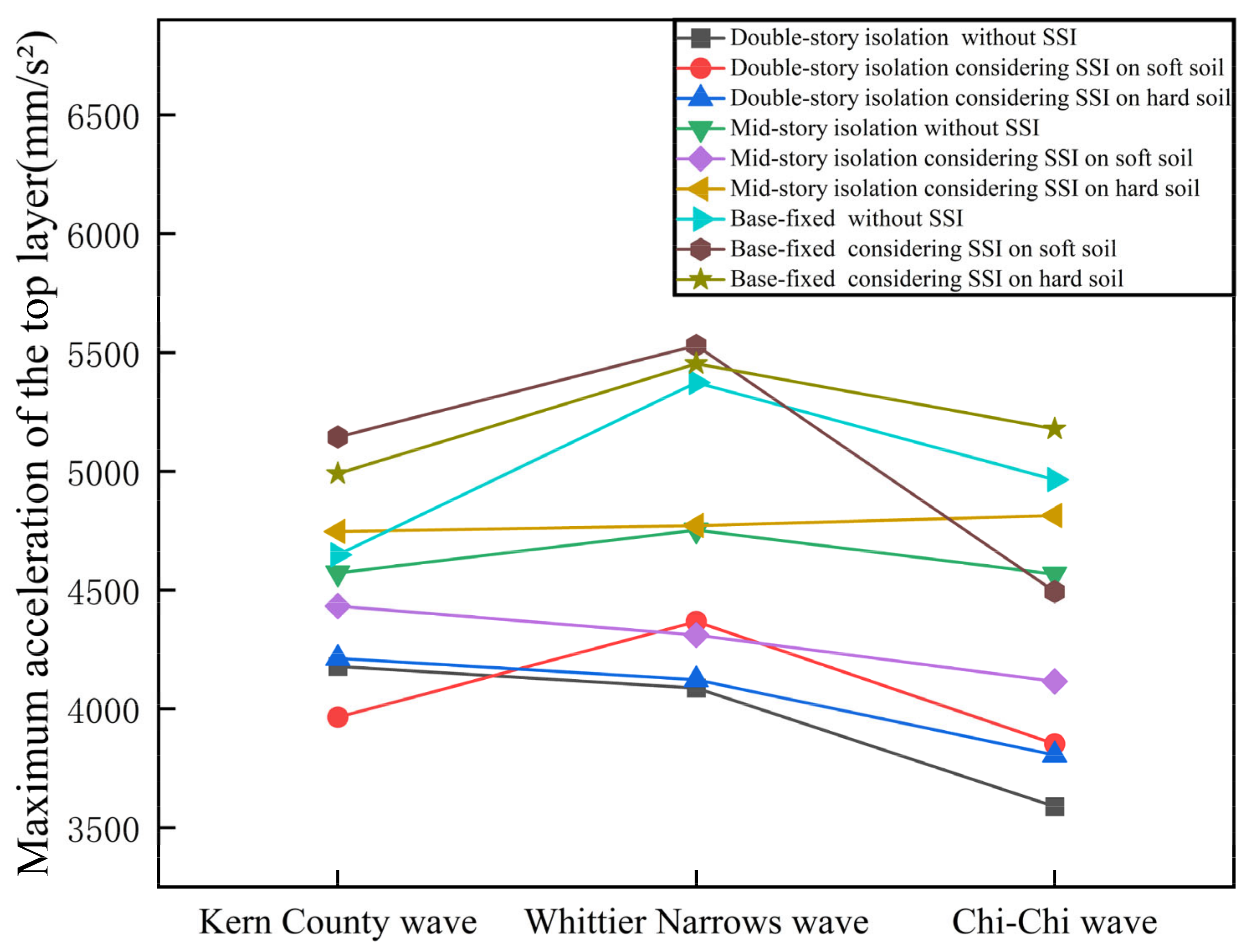
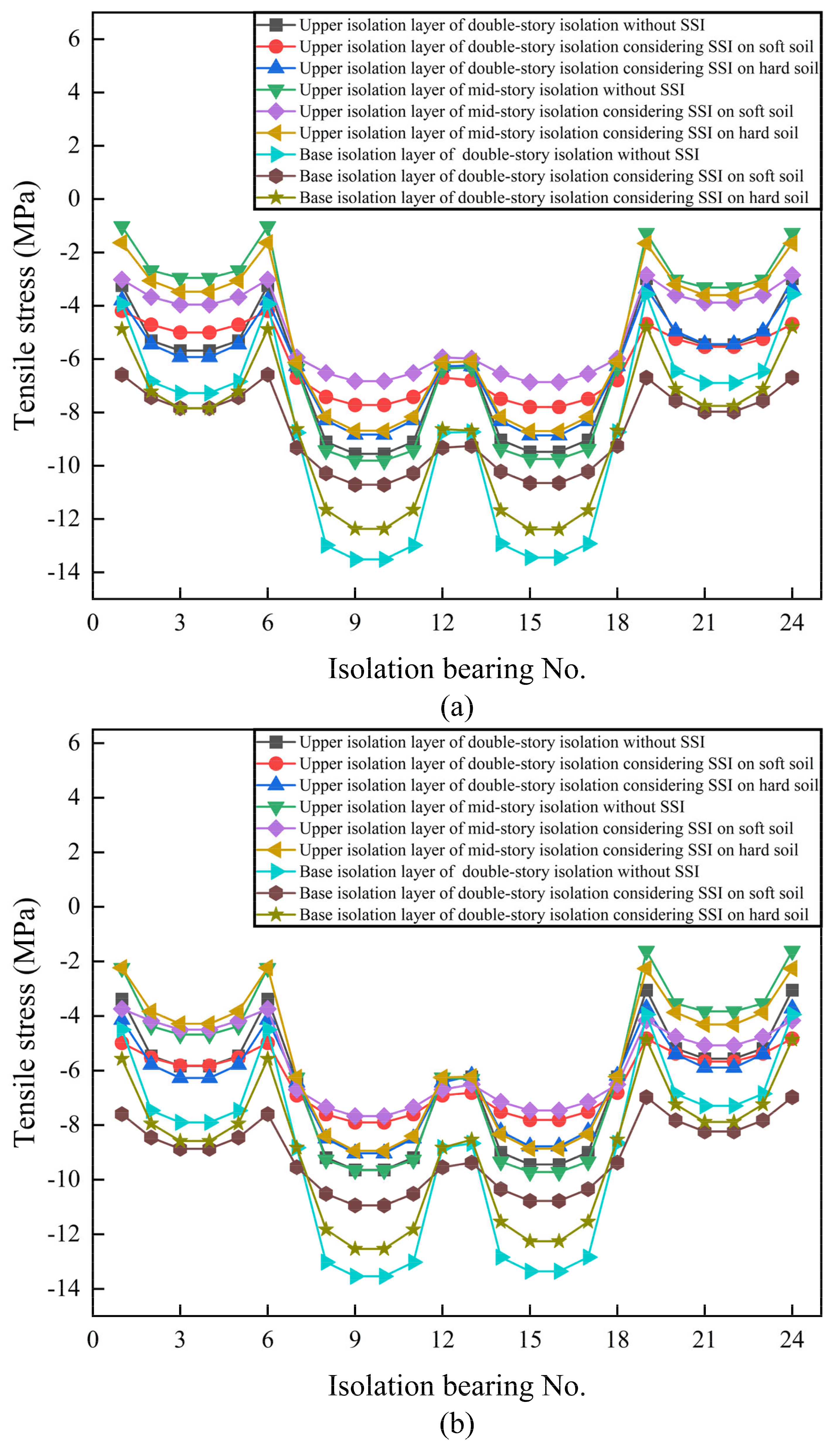
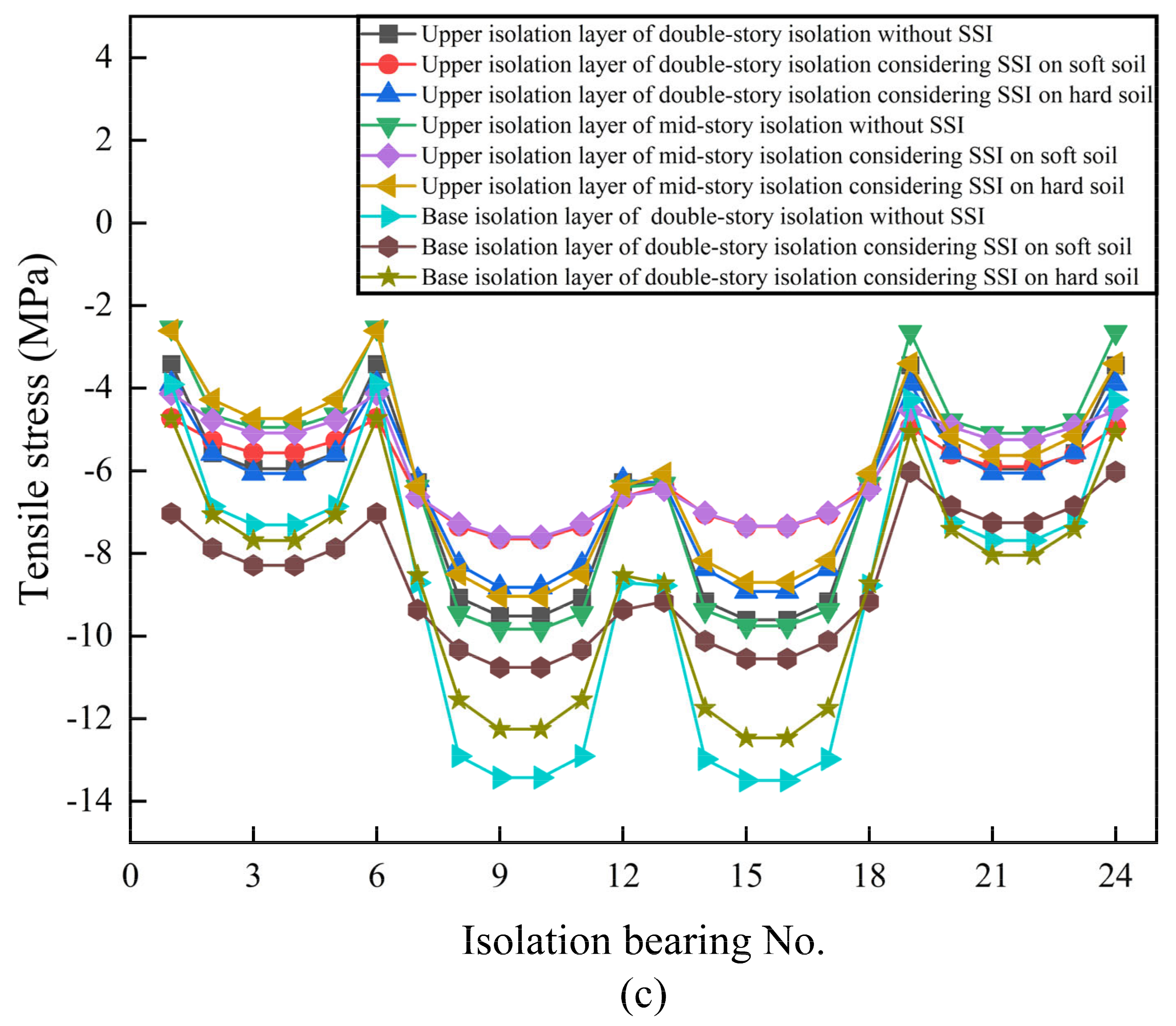


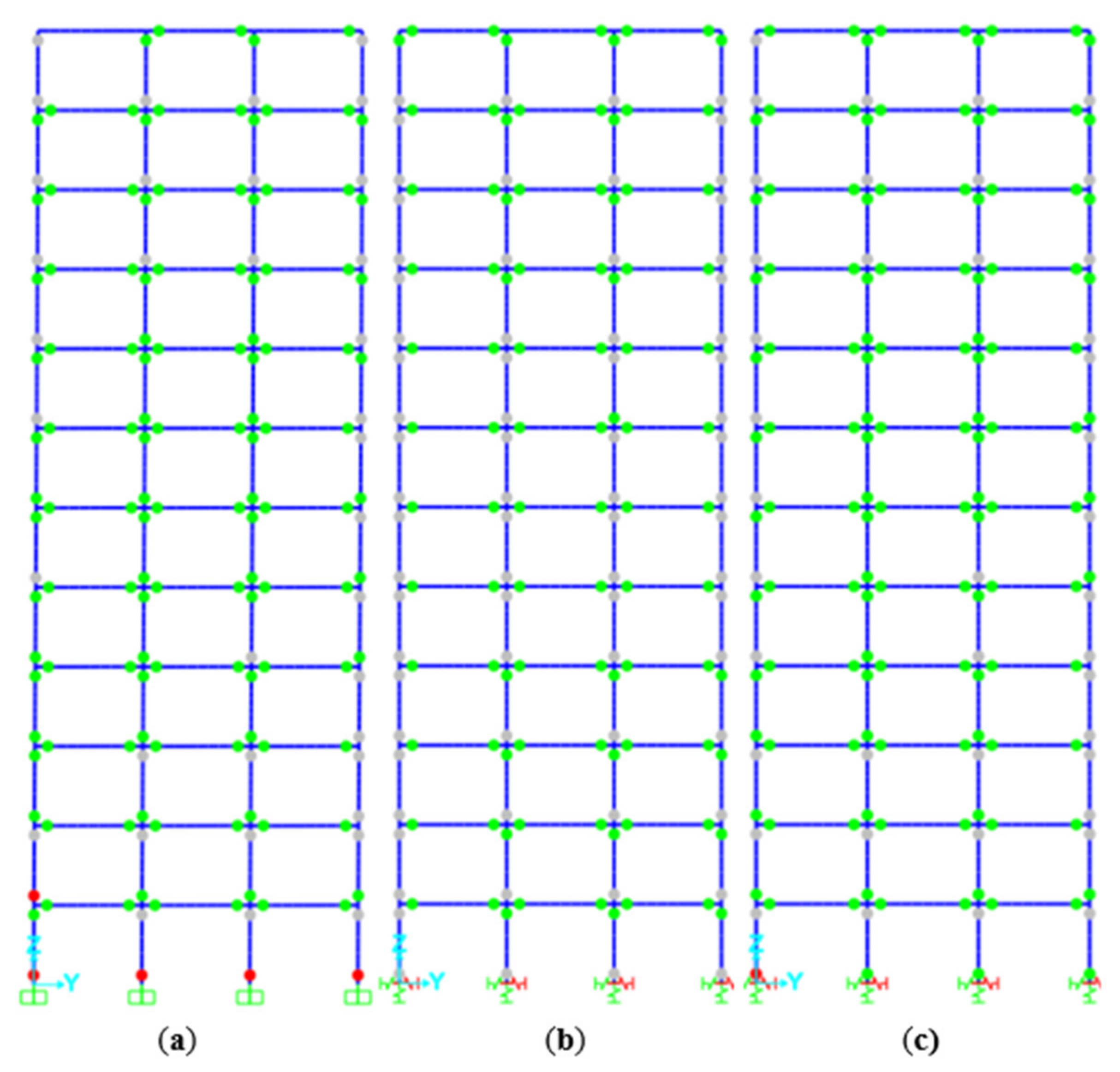





| Type | Effective Diameter (mm) | Total Rubber Thickness (mm) | Stiffness Before Yield (kN/m) | 100% Horizontal Shear Deformation (kN/m) | 250% Horizontal Shear Deformation (kN/m) | Vertical Stiffness (kN/mm) | Yield Force (kN) |
|---|---|---|---|---|---|---|---|
| LRB600 | 600 | 110 | 13,110 | 1580 | 1580 | 2800 | 63 |
| Earthquake | Year | Station | Magnitude | Fault Distance (km) | PGV (cm/s) | PGA (cm/s2) | PGV/PGA |
|---|---|---|---|---|---|---|---|
| Kern County wave | 1952 | Taft Lincoln School | 7.36 | 38.42 | 15.2 | 155.7 | 0.10 |
| Whittier Narrows wave | 1987 | Santa Monica—Second St | 5.99 | 32.8 | 3.0 | 33.4 | 0.09 |
| Chi-Chi wave | 1999 | KAU054 | 7.62 | 27.37 | 7.6 | 84.1 | 0.09 |
| Condition | Base Shear (kN) | Time History/Response Spectrum |
|---|---|---|
| Response spectrum | 12,366 | / |
| Kern County | 10,568 | 85.46% |
| Whittier Narrows | 10,063 | 81.38% |
| Chi-Chi | 11,083 | 89.62% |
| Average value | 10,571 | 85.48% |
| Mode | Stiffness Coefficient | Embedment Factor |
|---|---|---|
| Vertical stiffness | ||
| Horizontal y-directional stiffness | ||
| Horizontal x-directional stiffness | ||
| Rotational stiffness | ||
| Rotational stiffness |
| Type | Shear Wave Velocity (m · s−1) | Density | Poisson’s Ratio | Initial Shear Modulus () | Effective Shear Modulus () | Cohesive Force | Angle of Internal Friction () |
|---|---|---|---|---|---|---|---|
| Soft soil | 150 | 1600 | 0.3 | 1.1 | 0.462 | 18 | 6 |
| Hard soil | 400 | 2000 | 0.2 | 12.4 | 5.208 | 47 | 28 |
| Type | Mode Number | Structural Periods (s) | Modal Participating Mass Ratios | |||||
|---|---|---|---|---|---|---|---|---|
| Ux | Uy | Uz | Rx | Ry | Rz | |||
| Without SSI | 1 | 1.29 | 0.79 | 0 | 0 | 0 | 0.14 | 0 |
| 2 | 1.18 | 0 | 0.78 | 0 | 0.22 | 0 | 0 | |
| 3 | 1.07 | 0 | 0 | 0 | 0 | 0 | 0.79 | |
| 4 | 0.41 | 0.10 | 0 | 0 | 0 | 0.29 | 0 | |
| 5 | 0.38 | 0 | 0.11 | 0 | 0.44 | 0 | 0 | |
| 6 | 0.34 | 0 | 0 | 0 | 0 | 0 | 0.10 | |
| Considering SSI on soft soil | 1 | 2.55 | 0 | 0.77 | 0 | 0.23 | 0 | 0 |
| 2 | 1.77 | 0.80 | 0 | 0 | 0 | 0.17 | 0 | |
| 3 | 1.46 | 0 | 0 | 0 | 0 | 0 | 0.82 | |
| 4 | 0.49 | 0.14 | 0 | 0 | 0 | 0.59 | 0 | |
| 5 | 0.48 | 0 | 0 | 0.99 | 0 | 0 | 0 | |
| 6 | 0.46 | 0 | 0.18 | 0 | 0.61 | 0 | 0 | |
| Considering SSI on hard soil | 1 | 1.39 | 0 | 0.78 | 0 | 0.21 | 0 | 0 |
| 2 | 1.37 | 0.79 | 0 | 0 | 0 | 0.13 | 0 | |
| 3 | 1.17 | 0 | 0 | 0 | 0 | 0 | 0.78 | |
| 4 | 0.43 | 0.10 | 0 | 0 | 0 | 0.32 | 0 | |
| 5 | 0.39 | 0 | 0.12 | 0 | 0.47 | 0 | 0 | |
| 6 | 0.36 | 0 | 0 | 0 | 0 | 0 | 0.11 | |
| Type | Mode Number | Structural Periods (s) | Modal Participating Mass Ratios | |||||
|---|---|---|---|---|---|---|---|---|
| Ux | Uy | Uz | Rx | Ry | Rz | |||
| Without SSI | 1 | 2.83 | 0.78 | 0 | 0 | 0 | 0.10 | 0 |
| 2 | 2.79 | 0 | 0.78 | 0 | 0.15 | 0 | 0 | |
| 3 | 2.52 | 0 | 0 | 0 | 0 | 0 | 0.78 | |
| 4 | 0.51 | 0 | 0 | 0 | 0 | 0.29 | 0 | |
| 5 | 0.48 | 0 | 0 | 0 | 0.42 | 0 | 0 | |
| 6 | 0.43 | 0 | 0 | 0 | 0 | 0 | 0 | |
| Considering SSI on soft soil | 1 | 3.62 | 0 | 0.78 | 0 | 0.18 | 0 | 0 |
| 2 | 3.08 | 0.79 | 0 | 0 | 0 | 0.11 | 0 | |
| 3 | 2.71 | 0 | 0 | 0 | 0 | 0 | 0.79 | |
| 4 | 0.75 | 0 | 0.01 | 0 | 0.27 | 0 | 0 | |
| 5 | 0.63 | 0 | 0 | 0 | 0 | 0.46 | 0 | |
| 6 | 0.49 | 0 | 0 | 0 | 0 | 0 | 0 | |
| Considering SSI on hard soil | 1 | 2.88 | 0 | 0.77 | 0 | 0.14 | 0 | 0 |
| 2 | 2.87 | 0.77 | 0 | 0 | 0 | 0.09 | 0 | |
| 3 | 2.57 | 0 | 0 | 0 | 0 | 0 | 0.77 | |
| 4 | 0.53 | 0 | 0 | 0 | 0.38 | 0 | 0 | |
| 5 | 0.52 | 0.01 | 0 | 0 | 0 | 0.30 | 0 | |
| 6 | 0.44 | 0 | 0 | 0 | 0 | 0 | 0 | |
| Type | Mode Number | Structural Periods (s) | Modal Participating Mass Ratios | |||||
|---|---|---|---|---|---|---|---|---|
| Ux | Uy | Uz | Rx | Ry | Rz | |||
| Without SSI | 1 | 3.99 | 0.94 | 0 | 0 | 0 | 0.02 | 0 |
| 2 | 3.96 | 0 | 0.94 | 0 | 0.03 | 0 | 0 | |
| 3 | 3.58 | 0 | 0 | 0 | 0 | 0 | 0.94 | |
| 4 | 1.04 | 0.06 | 0 | 0 | 0 | 0.40 | 0 | |
| 5 | 1.04 | 0 | 0.06 | 0 | 0.58 | 0 | 0 | |
| 6 | 0.93 | 0 | 0 | 0 | 0 | 0 | 0.06 | |
| Considering SSI on soft soil | 1 | 4.64 | 0 | 0.92 | 0 | 0.07 | 0 | 0 |
| 2 | 4.18 | 0.94 | 0 | 0 | 0 | 0.03 | 0 | |
| 3 | 3.72 | 0 | 0 | 0 | 0 | 0 | 0.94 | |
| 4 | 1.15 | 0 | 0.08 | 0 | 0.83 | 0 | 0 | |
| 5 | 1.08 | 0.06 | 0 | 0 | 0 | 0.51 | 0 | |
| 6 | 0.95 | 0 | 0 | 0 | 0 | 0 | 0.06 | |
| Considering SSI on hard soil | 1 | 4.03 | 0 | 0.94 | 0 | 0.04 | 0 | 0 |
| 2 | 4.01 | 0.94 | 0 | 0 | 0 | 0.02 | 0 | |
| 3 | 3.61 | 0 | 0 | 0 | 0 | 0 | 0.94 | |
| 4 | 1.05 | 0 | 0.06 | 0 | 0.61 | 0 | 0 | |
| 5 | 1.05 | 0.06 | 0 | 0 | 0 | 0.41 | 0 | |
| 6 | 0.93 | 0 | 0 | 0 | 0 | 0 | 0.06 | |
| Structure Type | Kern County Wave | Whittier Narrows Wave | Chi-Chi Wave | |
|---|---|---|---|---|
| Double-story isolation structure | Without SSI | 88,746 | 74,537 | 85,087 |
| Considering SSI on soft soil | 104,771 | 87,565 | 95,315 | |
| Considering SSI on hard soil | 90,396 | 76,272 | 88,545 | |
| Mid-story isolation structure | Without SSI | 177,595 | 129,780 | 124,418 |
| Considering SSI on soft soil | 197,218 | 149,348 | 140,366 | |
| Considering SSI on hard soil | 187,215 | 139,980 | 135,193 | |
| Base-fixed structure | Without SSI | 315,347 | 264,147 | 228,241 |
| Considering SSI on soft soil | 199,998 | 204,606 | 182,461 | |
| Considering SSI on hard soil | 291,180 | 248,047 | 229,553 | |
| Type of Ground Motion | Without SSI | Considering SSI on Soft Soil | Considering SSI on Hard Soil | ||
|---|---|---|---|---|---|
| Kern County wave | Double-story isolation | Base isolation layer | 75.90 | 77.30 | 76.04 |
| Upper isolation layer | 50.82 | 62.49 | 46.56 | ||
| Mid-story isolation | Upper isolation layer | 159.96 | 187.88 | 164.41 | |
| Whittier Narrows wave | Double-story isolation | Base isolation layer | 73.58 | 77.04 | 73.97 |
| Upper isolation layer | 49.05 | 54.51 | 52.24 | ||
| Mid-story isolation | Upper isolation layer | 83.10 | 86.68 | 85.64 | |
| Chi-Chi wave | Double-story isolation | Base isolation layer | 68.83 | 99.84 | 71.81 |
| Upper isolation layer | 45.40 | 79.90 | 50.35 | ||
| Mid-story isolation | Upper isolation layer | 61.23 | 88.25 | 61.88 | |
Disclaimer/Publisher’s Note: The statements, opinions and data contained in all publications are solely those of the individual author(s) and contributor(s) and not of MDPI and/or the editor(s). MDPI and/or the editor(s) disclaim responsibility for any injury to people or property resulting from any ideas, methods, instructions or products referred to in the content. |
© 2023 by the authors. Licensee MDPI, Basel, Switzerland. This article is an open access article distributed under the terms and conditions of the Creative Commons Attribution (CC BY) license (https://creativecommons.org/licenses/by/4.0/).
Share and Cite
Gao, L.; Liu, D.; Lei, M.; Ding, Y.; Mu, S. Study on Shock-Absorbing Effect of a Double-Story Isolation Structure Considering Soil–Structure Interaction. Buildings 2023, 13, 2677. https://doi.org/10.3390/buildings13112677
Gao L, Liu D, Lei M, Ding Y, Mu S. Study on Shock-Absorbing Effect of a Double-Story Isolation Structure Considering Soil–Structure Interaction. Buildings. 2023; 13(11):2677. https://doi.org/10.3390/buildings13112677
Chicago/Turabian StyleGao, Liang, Dewen Liu, Min Lei, Yong Ding, and Shian Mu. 2023. "Study on Shock-Absorbing Effect of a Double-Story Isolation Structure Considering Soil–Structure Interaction" Buildings 13, no. 11: 2677. https://doi.org/10.3390/buildings13112677




